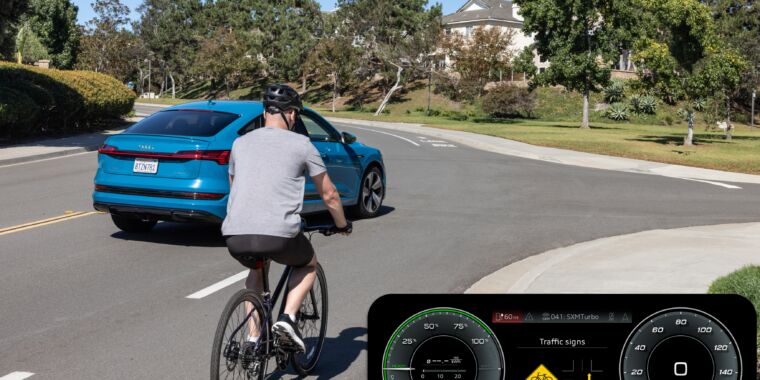Seems like another bandaid solution that doesn’t fix the actual infrastructure problem. Get ready for the day in court where a victim is asked what they were doing on public roads with a non C-V2X bicycle 🙄
We’ll do anything to avoid admitting that maybe our land use/ urban design philosophy is flawed and leads to dangerous streets and roads. I’ve been on and off about putting a tile or an airtag on my bike simply because no one else needs to have my location data, especially if they’re allowed to sell it. Would hate to see it mandated. Its bad enough that I’m not really able to leave home without my phone nowadays.
A while ago on Mastodon, I came across a post which posited that the present state of commercial AI safety is fundamentally flawed, because it tries to build safety as an after-thought atop a platform that wasn’t originally designed with safety in mind. The point of that post was to show that achieving perfect constraints for such complex systems is a fool’s errand for humans to aim for, and we should instead look to AI developments in academia for “safety-first” AI systems, ones that don’t start as general-purpose that require later conditioning.
I think a similar comparison can be made here, where motor vehicles are inherently dangerous and thus we need to accept that these “solutions” will only ever be games of whack a mole. Instead, we may need to look beyond the automobile for achieving personal mobility, if we want to have an intellectually honest approach to addressing roadway collisions.
Pivoting now to more abstract ideals, I find it problematic that to solve a problem chiefly caused by heavy, large motor vehicles – that is, cyclists being maimed, run over, or outright killed by motor vehicle collision – that the burden, as usual, is thrust upon cyclists, be it mandatory helmet laws or using so-called “beg buttons” because the ground loops won’t detect bicycles. That is, the need for the bicycle to be outfitted with technological solutions rather than cheap-but-politically-uncomfortable policy solutions, is just wrong to me. As it stands, building high-quality Complete Streets is unpalatable, yet praying for tech that’s ten years away is somehow tolerable. Sigh.
In more concrete terms, I can envision some obvious problems with this technology. The first is a DoS style attack where an operator can halt traffic by broadcasting the appearance of hundreds of bicycles stopped upon a road, preventing all the C-V2X cars from using a residential street as a bypass. Such exploits already exist in other ways.
And finally, I think the premise is bad: if a car is traveling so fast that it needs to “see” beyond line-of-sight, that’s an inherent incompatibility with human endeavors. The only land-based activity which solved this problem is the train, despite having stopping distances exceeding sight distances. And trains only achieve that safety using dedicated facilities (ie closed tracks, protected crossings) and strict enforcement of operating procedures. Cars have neither of these.
Seems like a stalking vector.
What about, oh I don’t know… a mirror? One of the things that most ebikes don’t include (also a courtesy bell, loud horn is a different purpose).
Then again, I haven’t ridden my bike in a while (local trail closure) and even after getting a mirror riding near a road doesn’t appeal to me (especially when in my area the alternative to being on the road is usually a ditch).
A decent mirror or two is always one of the very first things I get on a new bike.



